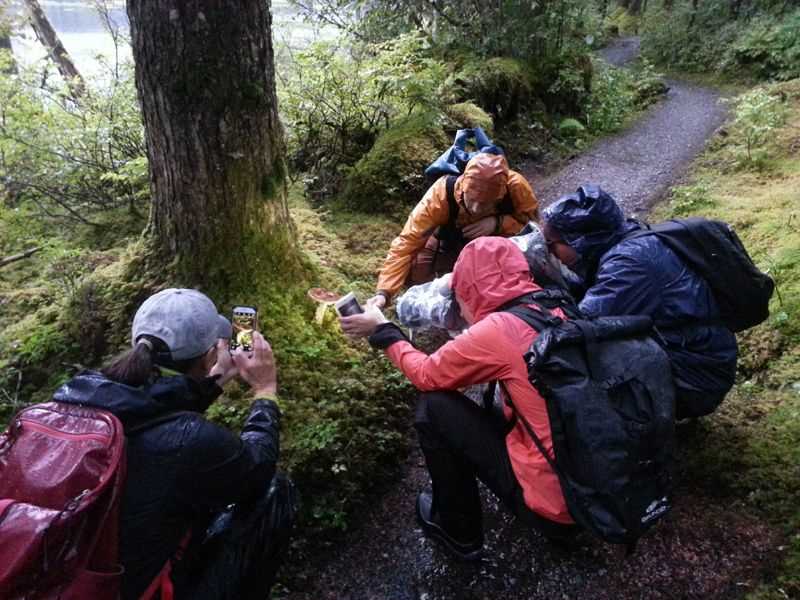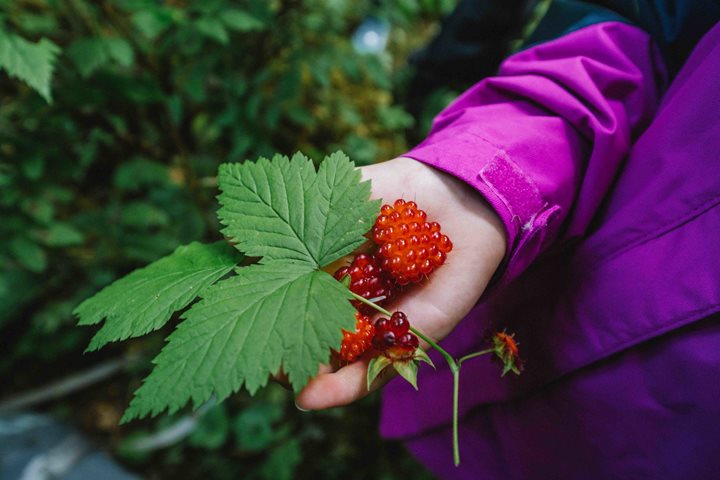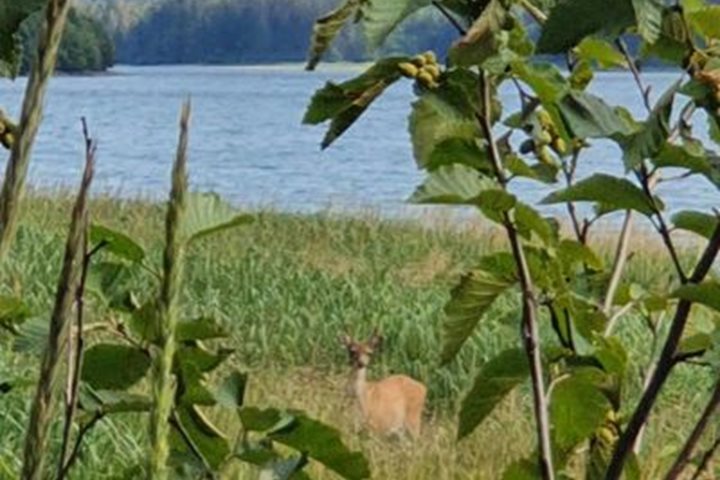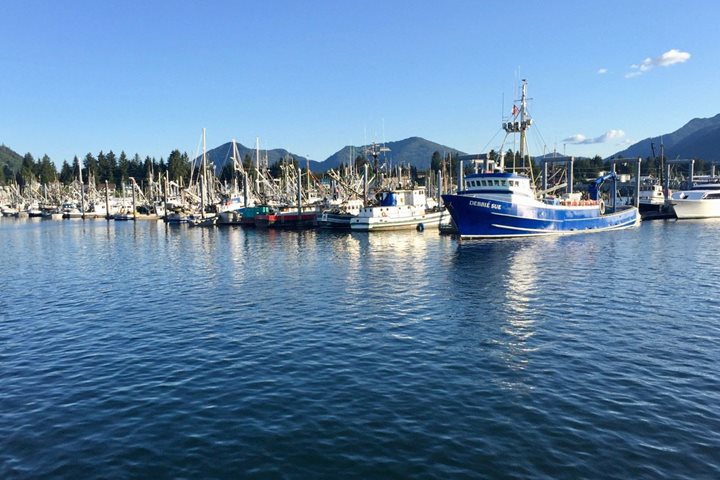Dawn gently eases us into another day of Alaska exploration. It’s a misty morning, the landscape slowly taking shape as the fog bends around bold mountain edges and alpine scrub. What appears to be a winter slope edging toward the sea is in fact our first view of a glacier- the Lamplugh. It descends from the Brady Icefield, and although it’s a short journey the glacier seems tired; it doesn’t appear to be active this morning, as it may scarcely touch the sea. We press on, hoping to find a more accommodating subject.
Though silent, this inlet has a story to tell. The geologic history of this region is quite dramatic, as geology tends to be! The mountainsides are fusion of stones that formed during the Paleozoic and Cretaceous time periods, visible still since they are sparsely vegetated. The Little Ice Age only departed this inlet one hundred years ago. There is still more ice than forest. Peering around a granodiorite ridge, we spy our first tidewater glacier- Johns Hopkins Glacier. Over the course of the morning, we are treated to the inspiring sights and sounds of this and several other glaciers- Hoonah, Toyatte, Gilmore, Margerie and Grand Pacific. Some are no more than remnant or tributary glaciers. Others, like Johns Hopkins and Margerie, still present an active calving face.
Never enough time at the glaciers, we continue our journey down bay, for this national park has presented us with two more storytellers: Interpretive Park Ranger Rebekah Weirda and Alaska Native Voices Cultural Interpreter Mamie Williams. They have joined us to each offer a perspective of this dynamic landscape. Between mountain goat and seabird colony viewing opportunities, they regale us with legends of time past, and a unique combination of oral history and scientific research unite to bring together a common message- that Glacier Bay National Park is a vital and vibrant wilderness and home.







